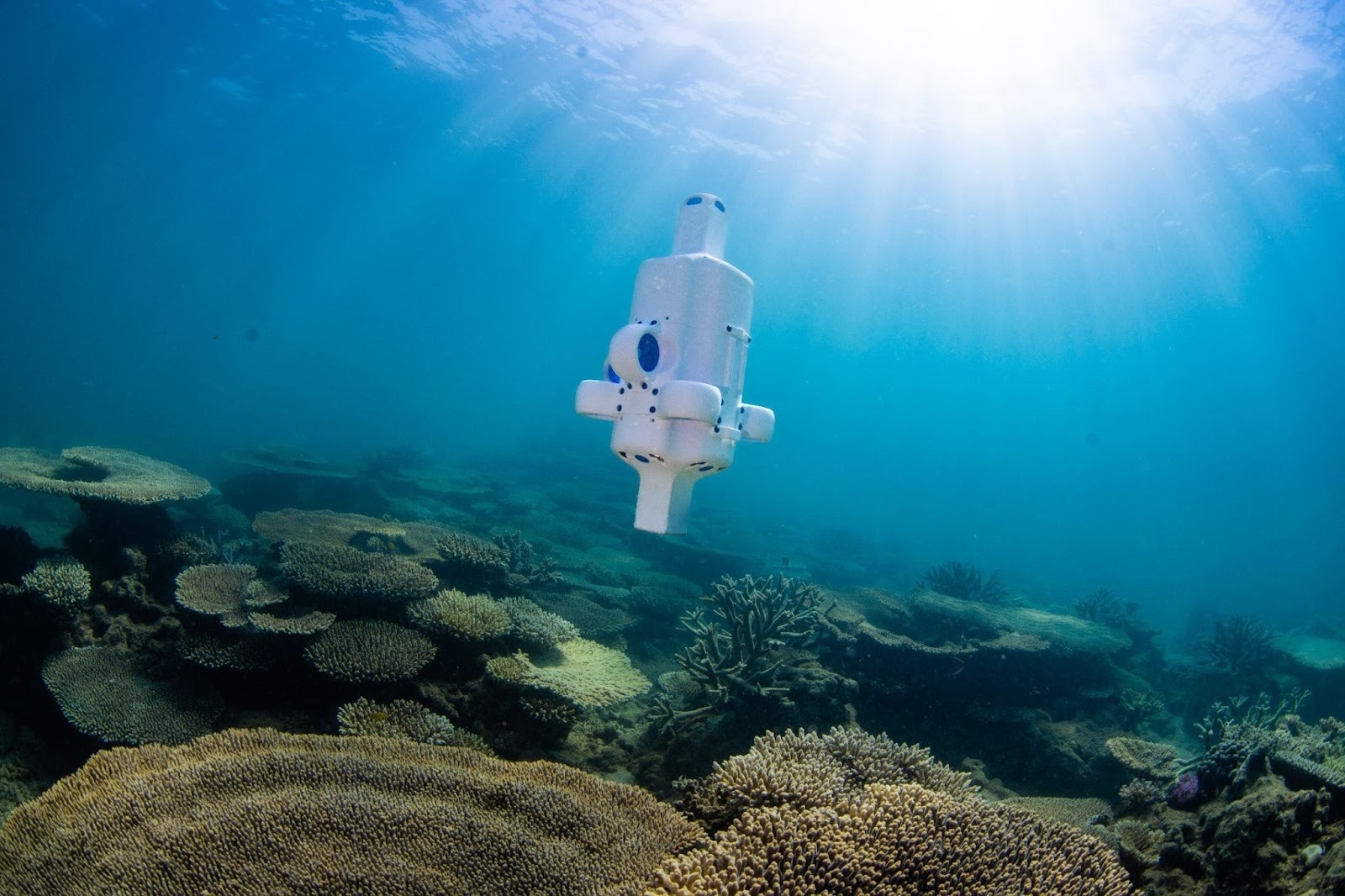Advanced Navigation, the world’s most determined innovator in AI robotics and navigation technology, will debut the underwater docking capability of its micro autonomous underwater vehicle (AUV), Hydrus at ICRA 2023 in London, United Kingdom.
 Advanced Navigation micro autonomous underwater vehicle, Hydrus, inspecting coral reefs. Image Credit: Advanced Navigation
Advanced Navigation micro autonomous underwater vehicle, Hydrus, inspecting coral reefs. Image Credit: Advanced Navigation
The exclusive preview will see Advanced Navigation bring two revolutionary technologies to the forefront of United Kingdom’s thriving AI and robotics market:
Award-winning micro autonomous underwater vehicle (AUV), Hydrus: aimed to revolutionise undersea inspection, detection and classification by making data capture simple and accessible, for research, aquaculture, offshore renewable energy, transportation, surveillance, biotechnology and high-tech services.
A yet-to-be-unveiled underwater docking capability: transforms Hydrus into a resident AUV, creating a permanent underwater home for it to collect and monitor underwater data with unmatched efficiency.
The Drone Revolution Underwater
Advanced Navigation is heralding an aquatic “drone revolution” with Hydrus. The design of the micro AUV synthesises numerous bleeding edge navigational and data capture technologies with highly developed and sophisticated artificial neural network intelligence.
Small enough to be carried on a plane, Hydrus is effectively an all-in-one (untethered) autonomous solution ready for use directly out of the box. It can be launched and retrieved by a single person, alleviating the need for expensive remote operated vehicles (ROVs), survey vessels, watercraft, highly trained operators and divers.
3D missions can be planned in minutes, without specific knowledge or training. The acoustic communication capabilities allow users to monitor and adjust missions on the fly. Upon mission completion, data can be wirelessly retrieved using a computer.
Launching Underwater Docking Capability
When paired with the underwater docking station (due for public release late 2023), Hydrus can remain underwater for extended periods of time. Once a mission is completed, Hydrus will return to its resident home to wirelessly recharge. Users can also program the vehicle to complete ad hoc missions from any facility in the world, without having to mobilise any boats or personnel.
Hydrus will offload data wirelessly to the station, allowing for data to be retrieved in real time, as the station is wired to a communication modem. By enabling Hydrus to have a permanent presence underwater, the technology opens up a number of new applications, including:
Underwater Research Lab
Researchers will have the ability to conduct cost-effective long-term environmental monitoring with an underwater research lab. When set up in resident mode, Hydrus can perform repetitive surveys on coral species by providing researchers with regular growth rates. The information can then be cross referenced with oceanographic data such as temperature and PH to determine what coral species will perform best in a bleaching event.
Aquaculture Monitoring
Hydrus can perform regular inspections of mooring lines, anchor points and tearing of fish pens to guarantee structural integrity, with no risk of contamination to the environment. Hydrus can also monitor fish health by counting marine life, spotting for signs of disease or looking for sea lice.
Offshore Wind Farm Inspection
Hydrus’ onboard capability to provide AI image processing allows it to capture the best quality images in the most challenging conditions. This can be used to automate tasks such as wind farm inspection by generating consistently high quality, geo-referenced imagery every time.
Surveillance
With a persistent presence underwater, Hydrus can monitor critical infrastructure and assets, such as power lines and data cables around harbours.